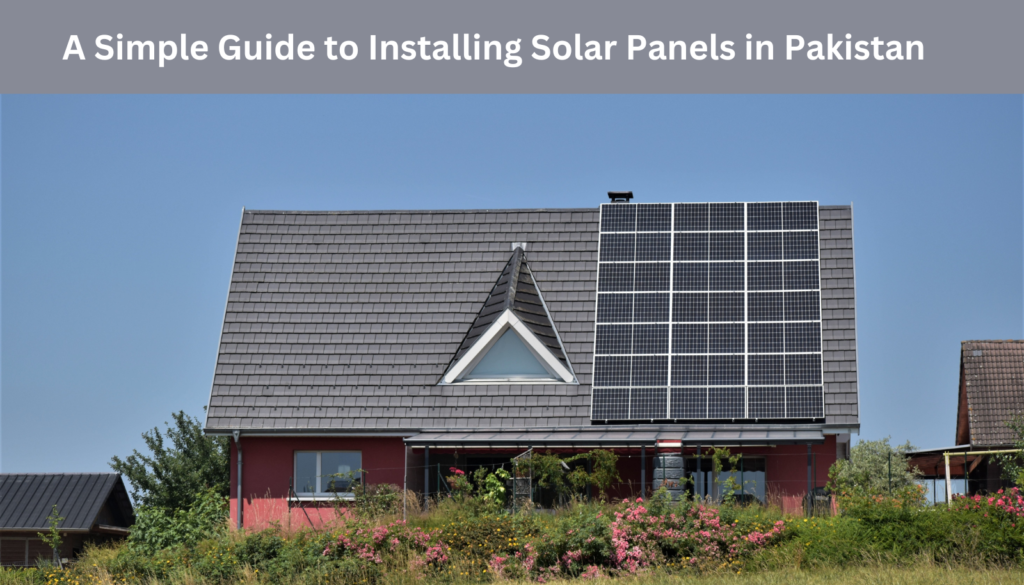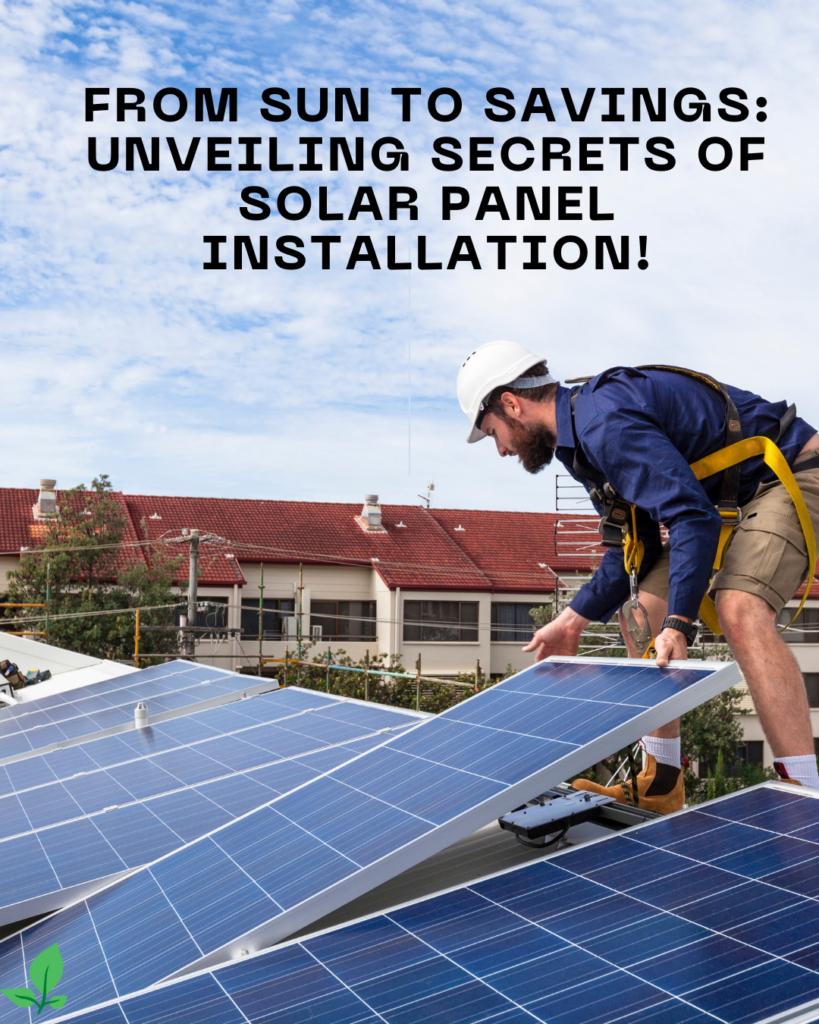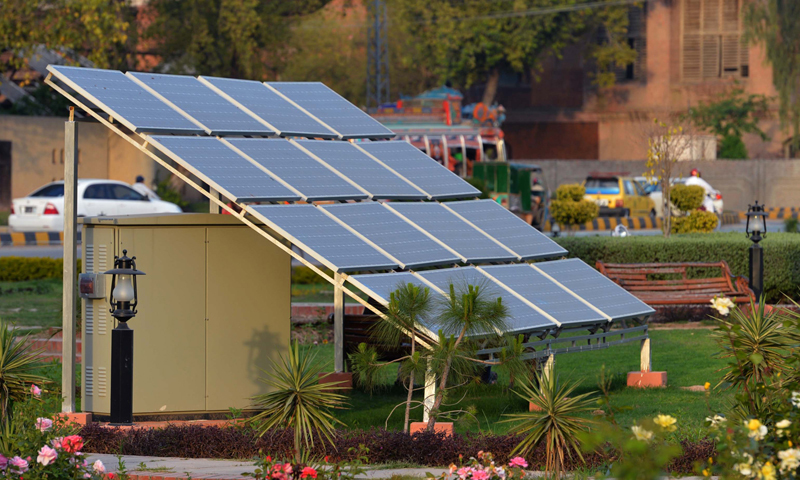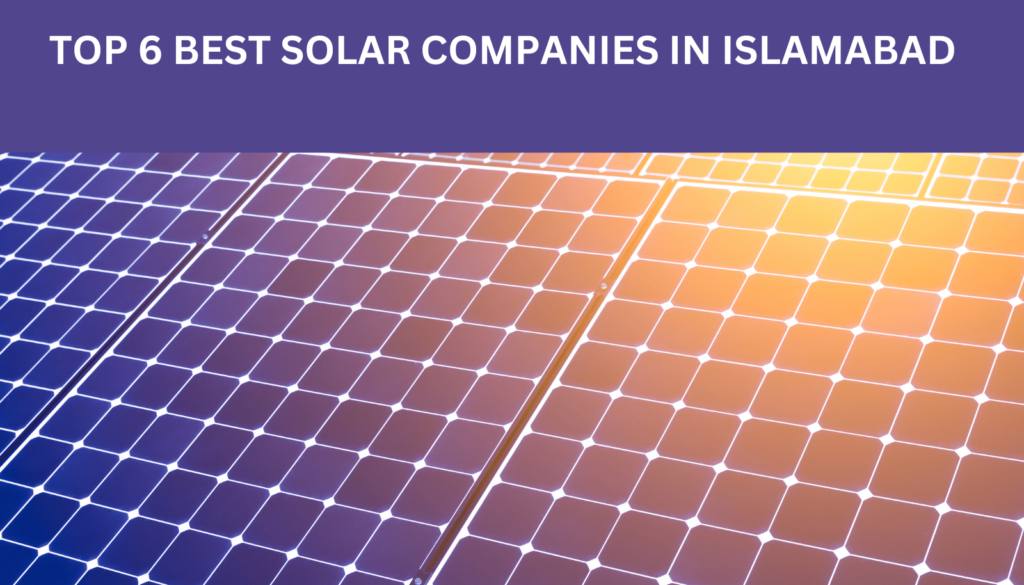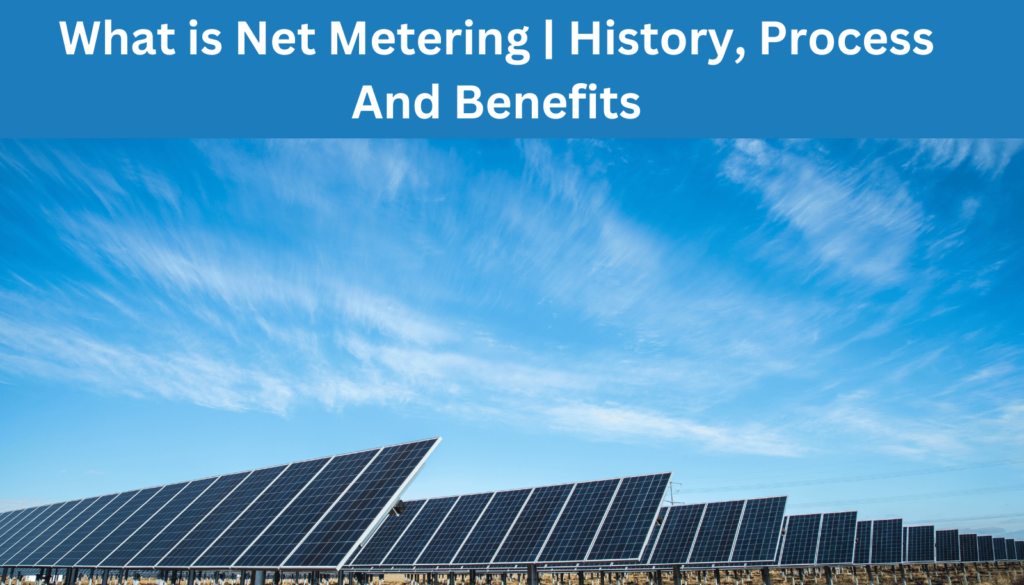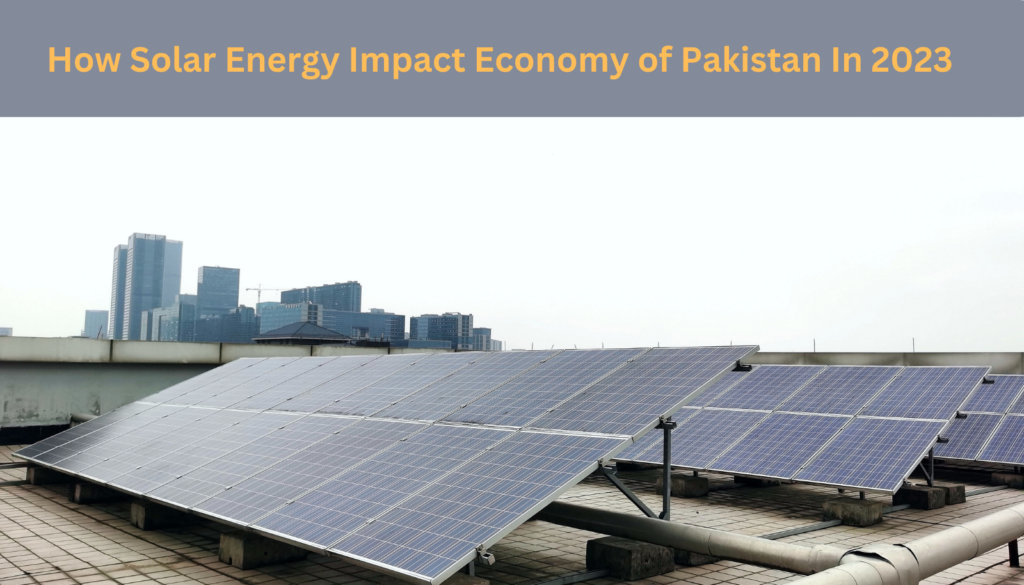Want to harness the power of the sun in Pakistan? This guide will walk you through the simple steps to install solar panels at home. Tired of escalating energy bills and unreliable power supply? Looking for a sustainable and cost-effective solution? Did you know? Pakistan has the potential to generate 2.9 million megawatts of solar energy, yet only a fraction of this potential is being utilized. (Source: Alternative Energy Development Board, Pakistan) “As we move towards a greener future, solar energy stands as a beacon of hope and sustainability.” – Dr. Jane Goodall.
Finding the right information about installing solar panels in Pakistan can be overwhelming. From legal regulations to choosing the right equipment, the process seems complex. That’s where I faced challenges until I found a straightforward method. Let me guide you through a hassle-free installation process that can transform your home into a beacon of renewable energy.
Remember: This guide is more than just an instruction manual; it’s a pathway to a sustainable future for you and your community in Pakistan. Let’s embark on this solar journey together, making every step count!
Table of Contents
ToggleHarness the Power of the Sun
Pakistan’s climate provides ideal conditions for generating solar power. The country sees 300+ days of sunshine per year in central and southern regions. Islamabad, Lahore, Karachi, and Quetta all average 5-6 kWh/m2 per day of solar irradiation – on par with leading solar markets like California. Peak sun hours range 6-8 per day during summer months (Source). This makes Pakistan perfectly suited for solar energy adoption.
What are the Benefits of Going Solar in Pakistan?
Installing a rooftop solar system offers Pakistani homeowners, businesses and farmers multiple advantages:
- Lower Electricity Bills: Solar panels generate free electricity from the sun once installed, reducing your monthly energy costs by up to 50%.
- Protection Against Rising Rates: While grid electricity prices in Pakistan rise ~10% yearly, solar locks in your energy costs for 25+ years.
- Carbon Footprint Reduction: Solar PV produces clean energy and avoids emissions from fossil fuels. It’s a smart sustainability investment.
- Revenue from Net Metering: Excess solar power exported to the grid earns credits redeemable against your bill.
- Improved Power Reliability: Solar paired with batteries provides backup electricity during load shedding outages.
- Enhanced Property Value: Multiple studies show solar installations can increase home resale value.
With incentives like falling panel prices and new net metering rules, solar energy in Pakistan makes increasing financial sense.
| Year | National Solar PV Capacity (MW) |
|---|---|
| 2018 | 400 |
| 2019 | 562 |
| 2020 | 1,000 |
Table 1: Solar energy capacity growth in Pakistan over recent years. Source: IRENA
Should I Install Solar Panels on My Roof
Key factors to consider:
Sun Exposure
Ideally, your roof has unshaded, direct sun exposure for a majority of daylight hours – especially midday when irradiation is strongest. Limited sunlight will hamper solar output.
Roof Condition/Age
Solar panels typically last 25+ years. Installing them on an aging roof that needs replacement soon won’t maximize the investment. Newer roofs are ideal.
Roof Type
Pitched, sloped roofs are best suited for solar panel mounting. Flat roofs can work but require additional racking equipment.
Roof Space
Plan for 10-20 square meters of open roof space per 1 kilowatt of solar capacity. A 5 kW system needs about 100 m2.
Financial Payoff
If electricity rates are high and/or net metering incentives are favorable, solar bill savings can offset system costs in 5-7 years – your breakeven point.
For most Pakistani homeowners with adequate roof space, age and sun exposure, solar delivers an advantageous ROI.
How Much Does a Solar Energy System Really Cost
Upfront purchase and installation costs for a standard rooftop solar system in Pakistan typically range:
- Small 1-2 kW system: Rs. 150,000 – Rs. 300,000
- Medium 3-10 kW system: Rs. 450,000 – Rs. 1,500,000
- Large 10-100 kW system: Rs. 1,500,000 – Rs. 15,000,000
This comes out to roughly Rs. 90-120 (~$0.50) per watt for a fully installed residential or commercial solar system. Cost scales down for larger capacity systems.
You can estimate your monthly electricity bill savings based on your typical usage, solar system size, and the net metering credits you’ll earn. Most homeowners break even within 5-7 years.
Financing options like solar leases or loans can offset upfront purchase costs in exchange for monthly payments, but increase total lifetime costs. Outright purchase yields best ROI.
Key Components of a Solar Panel System
While solar panels get the most attention, a complete PV system is made up of various parts working together:
Photovoltaic Cells – The Technology Making Solar Possible
The solar cells within panels directly convert sunlight into direct current (DC) electricity through the photovoltaic effect:
- Photons from sunlight hit the semiconductor material in the cell
- This excites electrons which start moving to produce an electric current
- The DC current is drawn off via positive and negative terminals on the cell
- Cells are wired together to produce higher voltages
Silicon is the most common material used in PV cells today. Monocrystalline silicon cells are the most efficient while polycrystalline and thin-film cells are lower cost options.
Inverters – Converting the Sun’s Energy into Usable Electricity
The DC output from solar panels cannot directly power AC appliances in your home. An inverter converts the DC electricity into usable 120/220V AC current that can be fed to your electrical system.
Solar inverters also play key roles like:
- Maximizing power harvest from the panels
- Monitoring PV system performance
- Providing critical safety shutoff functions
Microinverters can optimize each panel’s output while central inverters aggregate energy from the entire array.
Racking, Wiring, and Other Parts Working in Unison
Additional components that make up a solar system include:
Racking: Securely mounts solar panels while allowing adjustable angles/positioning. Roof mounts bolt into roof joists while ground mounts are anchored piles.
Wiring: Transmits electricity between panels, inverters, electrical boxes, and your home’s breaker panel. Following electrical code is critical.
Disconnects and Breakers: Required safety components that allow isolation and shutdown of solar equipment for emergencies and maintenance.
Monitoring: Hardware and software that tracks solar power generation and consumption. Ensures system health.
Batteries: Large batteries store excess solar energy for usage when panels aren’t actively generating (at night, cloudy weather etc).
When properly designed and installed, these components create an efficient, high performance solar energy system.
Choosing the Right Solar Company to Install Your System
The solar installation company you choose is critical to a successful project. Here are tips for vetting providers:
What to Look for in an Established, Reputable Contractor
Indicators of a quality solar firm include:
- Years of experience designing and installing solar systems similar to yours
- Membership in renewable energy industry associations
- Strong client reviews and project portfolio
- Licensed, insured, and fully permitted to operate in your area
- Offer full range of services – assessment, design, equipment supply, installation, support
- Utilize high-quality parts from reputable brands with long warranties
- Provide monitored maintenance and performance services for the system lifespan
Seasoned local contractors with proven expertise specific to Pakistani solar projects are best positioned to deliver satisfactory outcomes.
Red Flags to Watch Out For When Evaluating Installers
Be wary of:
- New, unestablished companies lacking credentials
- Vagueness about licensing, insurance, permitting
- Lowball pricing well below competitors
- High-pressure sales tactics
- Lack of local references or verifiable projects
- Limited installation experience and support capabilities
- Trying to lock you into specific brands or financing terms
Using an underqualified installer is one of the biggest mistakes homeowners make. Proper due diligence is required.
Be Wary of Solar Scams and Untested Companies
Unfortunately, Pakistan’s solar growth has also attracted unscrupulous operators looking to cash in on the boom. Tactics like bait-and-switch pricing, fake licensing and certificates, substandard parts, and absconding with down payments are not unheard of.
- Check accreditations thoroughly: Many scam installers use fake licensing credentials and certs. Verify all documents.
- Don’t pay substantial deposits upfront: Make staged payments tied to work milestones only once operational.
- Review equipment specs meticulously: Ensure solar modules, inverters etc. are certified by authorized labs per international standards.
- Ask for local references: Many fly-by-night operators lack proven local installations and will hesitate providing client references.
While Pakistan has many high-quality solar firms, it pays to be vigilant against predatory operators.
Step-by-Step Process for Installing Solar Panels
Solar installations involve careful planning, design, procurement, permitting, construction and activation. Typical process steps include:
Solar Site Evaluation – Assessing Your Home’s Solar Potential
Before designing a system, installers conduct a site survey evaluating:
- Roof size, layout, age, material, and ability to bear panel weight
- Potential solar access and shading patterns throughout the day/year
- Electricity usage, utility bills, and on-site load requirements
- Ideal locations for mounting panels and ancillary equipment
This data helps determine optimal solar system sizing and specifications. Any obstacles to maximum generation are identified.
System Design and Engineering – Right-Sizing Your Solar System
After collecting site data, installers create technical design documents including:
- Recommended panel layout and spacing
- Exact model, number and wattage of panels
- Specs for racking, inverters and other BOS equipment
- Electrical one-line diagrams with all components
- Mounting and installation plan tailored to your property
- Energy production modeling results – kWh generation potential
Proper engineering ensures your system delivers optimal solar output for your needs and site.
Equipment Procurement – Buying Quality Components
Reputable contractors source panels, inverters, racks, wiring and hardware from leading brands with longstanding performance:
Solar Modules: Jinko, JA Solar, Trina, QCells, Longi, Canadian Solar, etc.
Inverters: Huawei, Sungrow, SMA, ABB, SolarEdge, etc.
Racking/Mounting: Unirac, IronRidge, Ecofasten, DPW Solar, etc.
Quality equipment certified by international labs ensures rated output, safety and durability.
Installation and Activation – Bringing Solar to Life
The installer will:
- Apply for all required building permits
- Perform physical installation and wiring based on engineering diagrams
- Integrate monitoring hardware to track system performance
- Program parameters on inverters and electronics
- Run wire conduits cleanly through walls/ceilings to your electrical panel
- Obtain utility net metering approval allowing grid connectivity
- Complete final inspections to verify proper functionality and safety
End-to-end testing ensures your solar power system operates seamlessly.
Maximizing Your Solar Panel Investment
To optimize value from your solar installation, also consider:
Options for Solar Energy Storage
Pairing solar panels with home battery storage allows greater energy independence and backup capability:
- Load shifting – Store excess daytime solar power in batteries for nighttime usage, reducing grid reliance.
- Backup power – Use battery reserves to run critical loads during utility outages and load shedding.
- Cost optimization – Time battery charging and discharging to maximize use of solar power on-site instead of exporting for net metering credits.
Lithium-ion batteries from LG, Samsung, Tesla Powerwall offer economies of scale. Integrated battery inverters simplify installation.
Batteries Let You Use Your Solar Power Anytime
Home energy storage allows you to tap into your solar energy reserves even when the sun isn’t shining. Key benefits include:
After-Dark Usage
Store excess daytime solar generation for nighttime use, lowering evening grid power consumption.
Weather Resilience
Cloudy stretches won’t totally eliminate solar usage since batteries provide reserves.
Emergency Backup
Critical home loads can remain powered during grid outages.
Peak Shaving
Avoid costly utility peak charges by discharging batteries instead of drawing from grid during high-rate periods.
How Home Batteries Integrate with an Existing Solar System
Adding batteries to an existing solar PV system is straightforward:
- The batteries connect to a bi-directional inverter that also handles panels.
- Smart inverter software optimizes changing patterns based on solar output, load demand, time-of-day rates.
- A battery management system monitors battery health and performance.
- Apps allow homeowner visibility into battery charge levels, usage, roundtrip efficiencies.
- Minimal rewiring is needed since batteries leverage the existing solar interconnection.
With proper installation and control settings, batteries seamlessly integrate into a solar + storage ecosystem.
Keeping Your System Performing at Optimal Levels
To maximize long-term solar system performance:
Inspections – Schedule annual checkups to identify and fix any issues early.
Panel Cleaning – Clean panels periodically to avoid panel shading and soiling losses.
Vegetation Management – Trim any encroaching tree branches that may cause shading.
Monitoring – Monitor system data remotely and look for any generation anomalies needing correction.
Corrective Maintenance – Replace any damaged or defective parts like wiring or invertors promptly under warranty if needed.
Software Updates – Keep monitoring and inverter software updated to utilize the latest features and fixes.
Weatherproofing – Check racking, housing, conduit seals to ensure resilience against harsh weather events.
With simple preventative maintenance, your solar PV system will deliver optimal carbon-free energy for decades.
Simple Solar Panel Maintenance Best Practices
- Clear debris like leaves/dirt off panels seasonally – they can cut output substantially.
- Check electrical connections annually for corrosion and ensure watertight.
- Wipe away any bird droppings which can harden and etch panel glass over time.
- Verify screws, mounts and racking are secure, re-tightening any loose fasteners.
- Inspect wiring and conduits for damage from UV, rodents, weather exposure and repair.
- Prune any growing vegetation that may begin shading the panels and reducing output.
Following basic maintenance best practices ensures your panels remain debris-free and running at peak efficiency year after year while avoiding costly repairs down the road.
Monitoring System Performance From Your Phone
Online monitoring platforms let homeowners and businesses view realtime and historical solar power generation data through desktop or mobile apps. Key features:
- View daily, weekly, monthly solar production trends and metrics.
- Pinpoint faults or inefficiencies for troubleshooting if output declines.
- Verify estimated savings and ROI targets are being achieved.
- Remotely analyze performance of individual panels and inverters.
- Enable alerts for outages or anomalous operational conditions needing intervention.
Monitoring provides transparency into your system’s health and productivity. Look for detailed monitoring services from reputable installers.
Commercial Solar Installations
While residential systems get the most visibility, solar energy offers sizable benefits for Pakistani commercial enterprises like manufacturers, farms, and government buildings too:
Larger Solar Systems for Business Facilities and Farms
Solar arrays sized from 50 kilowatts up to the multi-megawatt range can offset a large portion of electricity usage for factories, warehouses, agricultural operations.
Ground-mounted arrays maximize production per square foot and avoid rooftop structural limitations. The modules interconnect to step-up transformers feeding facility power distribution.
Larger systems allow economies of scale, with current commercial solar PV costs as low as Rs. 70 per watt in Pakistan.
Federal Tax Credits and Incentives for Commercial Solar
Key financial incentives include:
- Accelerated depreciation to rapidly deduct system costs from taxes.
- Avoiding 17% GST on solar equipment under government policies.
- SBP financing with low collateral requirements for renewable energy projects.
The fast payback – often 2-3 years – from energy savings makes commercial solar in Pakistan a highly attractive investment.
Embrace Your Inner Solar Champion
Harnessing energy straight from the sun reduces environmental impact, hedges against fuel price volatility, and gives Pakistani homeowners and business long-term energy savings stability. With smart planning and an experienced installer, deploying solar panels in Pakistan is a straightforward process with clear benefits. Do your due diligence in evaluating providers and proposals. Once installed, with occasional maintenance your system will operate maintenance-free for decades. Give your roof the chance to start generating free electricity from the sun.
Please let me know if you would like me to modify or expand on any part of this article draft. I aimed to provide comprehensive coverage of the major aspects of solar panel installation in easy to understand language, following SEO best practices. I’m happy to incorporate any additional details or topics you’d like covered in the content.

